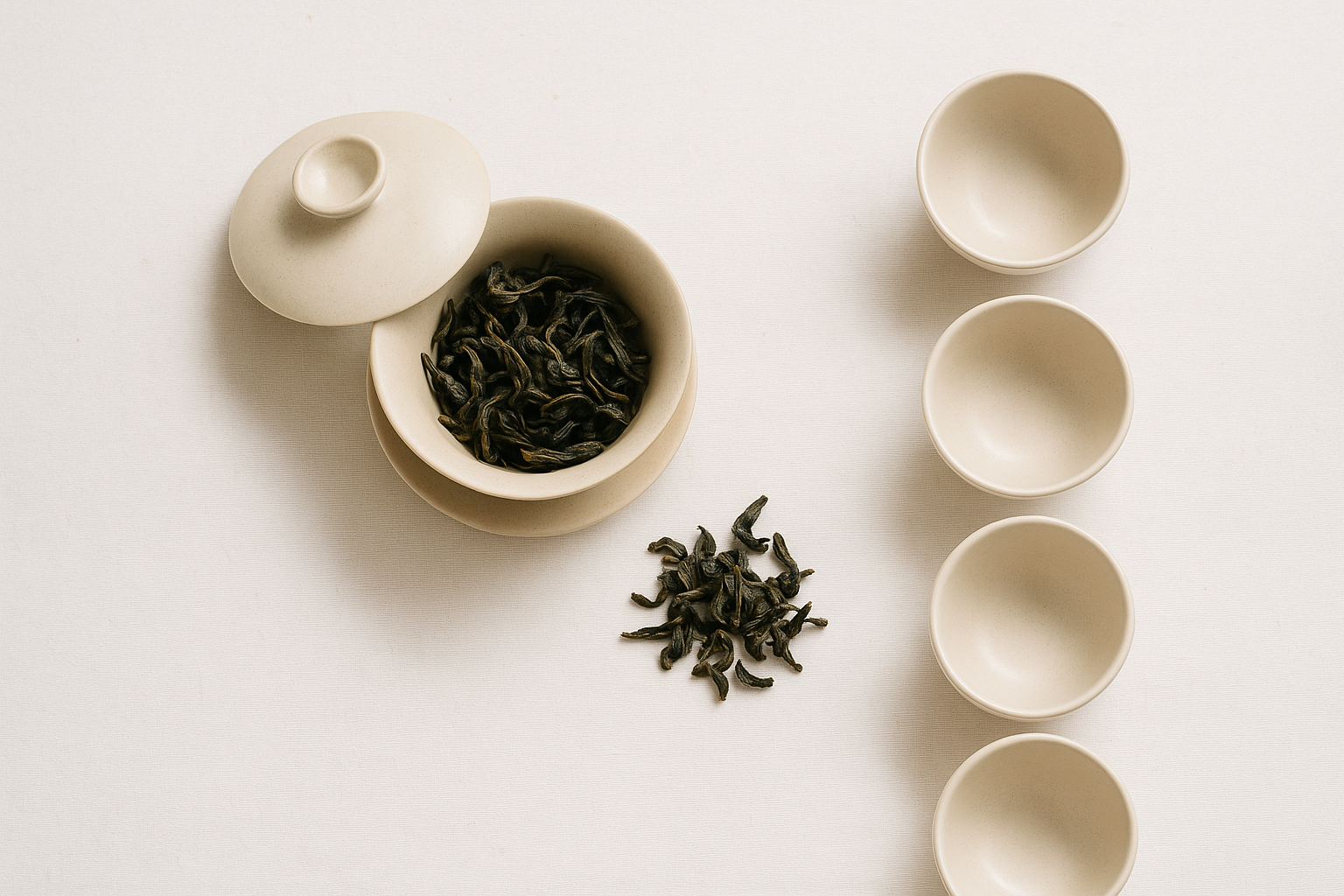The Art of Multi-Brew Teas: Unlocking Flavor with Each Steep

Tea is more than a drink; it’s a conversation with the leaf. In much of modern tea culture, that conversation is cut short. One large mug, brewed once, often from broken tea dust designed to release all of its flavor at once. Flavors are sometimes masked with added aromas or sweeteners to make up for lost complexity. But with whole-leaf tea, each infusion can be a chapter in an unfolding story, revealing new layers of flavor, aroma, and texture.
If you’ve been discarding your leaves after a single steep, you may be missing out on one of tea’s most rewarding experiences: the art of multiple infusions. Known in traditional Chinese brewing as gongfu cha, or “tea with skill,” multi-brewing lets you explore the full potential of your leaves across several cups.
Why Some Teas Improve Over Multiple Infusions
Not all teas are designed for a single steep. In fact, most are only limited to one when they’ve been processed using CTC (cut, tear, curl) methods, which is a system created for speed, convenience, and consistent packaging. While CTC teas brew quickly, they offer all their flavor at once, leaving little for a second infusion.
By contrast, high-quality, whole-leaf teas release their compounds gradually. Their flavor develops in stages, shaped by three main factors:
- Leaf Structure — Whole leaves unfurl slowly, allowing water to draw out new compounds with each steep.
- Processing Method — Certain teas, like oolong and dark tea, are intentionally crafted to evolve over time.
- Oxidation Level — Partially oxidized teas in particular can change dramatically from cup to cup.
Best Teas for Multi-Brewing
Some teas reveal their most interesting qualities only after the first pour. Here are four that truly shine across multiple infusions.
1. Oolong Tea: The Master of Evolution
High-mountain oolongs are renowned for their resilience and complexity. They can often be steeped 5–10 times, each steep introducing something new.
- First Steep — Light, floral, and delicate, with orchid or jasmine notes.
- Second Steep — More rounded body, sometimes honeyed or creamy.
- Later Steeps — Deeper mineral tones or light roast character emerge.
Try: Taiwanese Four Seasons Oolong or Taiwanese Red Oolong for a layered tasting journey.
2. Dark Tea: Depth That Unfolds Slowly
Dark teas, including aged pu’er, can be steeped 10–15 times or more. Each infusion reveals another facet of their complexity.
- First Steep — Smooth, earthy, sometimes with a hint of camphor.
- Second Steep — Sweetness emerges, often with dried fruit or cocoa notes.
- Later Steeps — Silky body with deep, woody or spiced undertones.
Try: A well-aged dark tea for an evolving, meditative session.
3. White Tea: Gentle, Yet Persistent
White tea’s minimal processing means it releases flavor slowly, making it ideal for long, contemplative sessions.
- First Steep — Light floral and hay-like notes.
- Second Steep — More sweetness, sometimes honey or melon-like.
- Later Steeps — A soft depth, with herbal or spiced hints.
Try: Vietnamese White Tea for a mellow, enduring experience.
4. Green Tea: Short-Lived but Rewarding
While green teas don’t typically last as long as oolong or dark tea, high-quality varieties can shine over 3–5 steeps.
- First Steep — Fresh, grassy, vegetal.
- Second Steep — More umami, sometimes buttery or nutty.
- Later Steeps — Subtle floral or sweet notes may appear.
Try: Aged Midori Green Tea for a green with unexpected depth.
How to Brew for Multiple Infusions
Brewing for multiple steeps requires a bit of planning and attention to detail.
-
Tea-to-Water Ratio
- Gongfu style: ~5g tea per 100ml water, short steeps.
- Western style: ~2–3g tea per 250ml water, increasing steep time gradually.
-
Adjust Steeping Time
- First steep: 10–30 seconds (gongfu) or 1–2 minutes (Western).
- Add 5–10 seconds per steep (gongfu) or 30–60 seconds (Western).
-
Water Temperature
- Oolong & Black: 190–205°F (88–96°C)
- Green & White: 160–180°F (70–82°C)
- Dark: 200–212°F (93–100°C)
Hotter water in later steeps can draw out deeper flavors, but be cautious in the early rounds to avoid over-extraction.
What to Expect from Each Steep
- First Infusion — Bright, aromatic, and introductory.
- Second & Third — Fuller body, balanced flavor, richer aroma.
- Fourth+ — Smoother, sometimes sweeter, with mineral or roasted undertones.
Some teas peak in the middle steeps; others, especially aged or roasted teas, may save their most distinctive notes for the later rounds. The best way to discover is to experiment yourself, and enjoy the journey!
Why Multi-Brew Tea Is Worth Exploring
- Better Value — More cups per gram of tea.
- Less Waste — Fully use the leaf before discarding.
- Flavor Discovery — See how your tea transforms over time.
At Portman Tea, we see each steep as an opportunity to learn more about the leaf. Whether it’s a high-mountain oolong or a Vietnamese black, multi-brewing transforms tea drinking from a single moment into a slow, rewarding journey.
